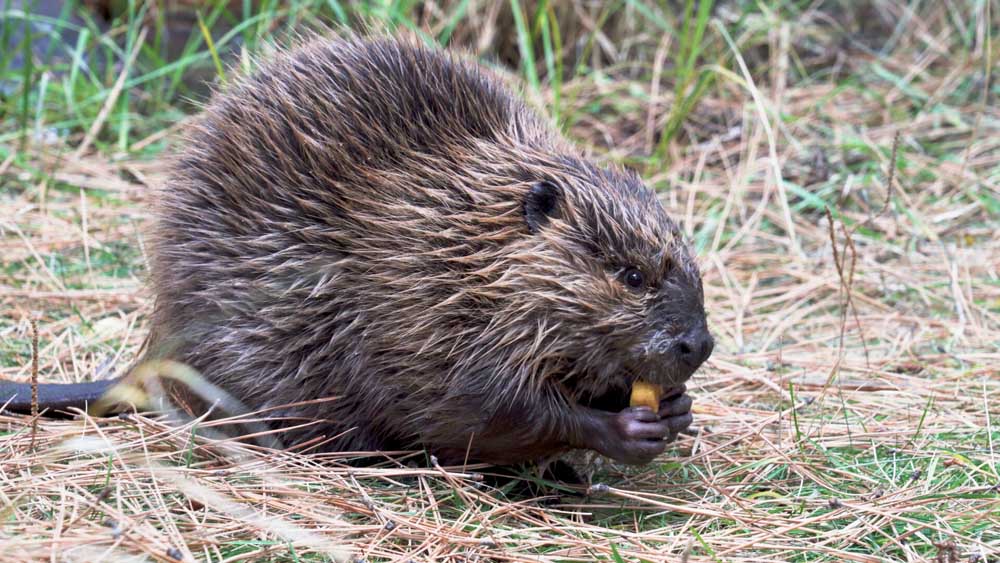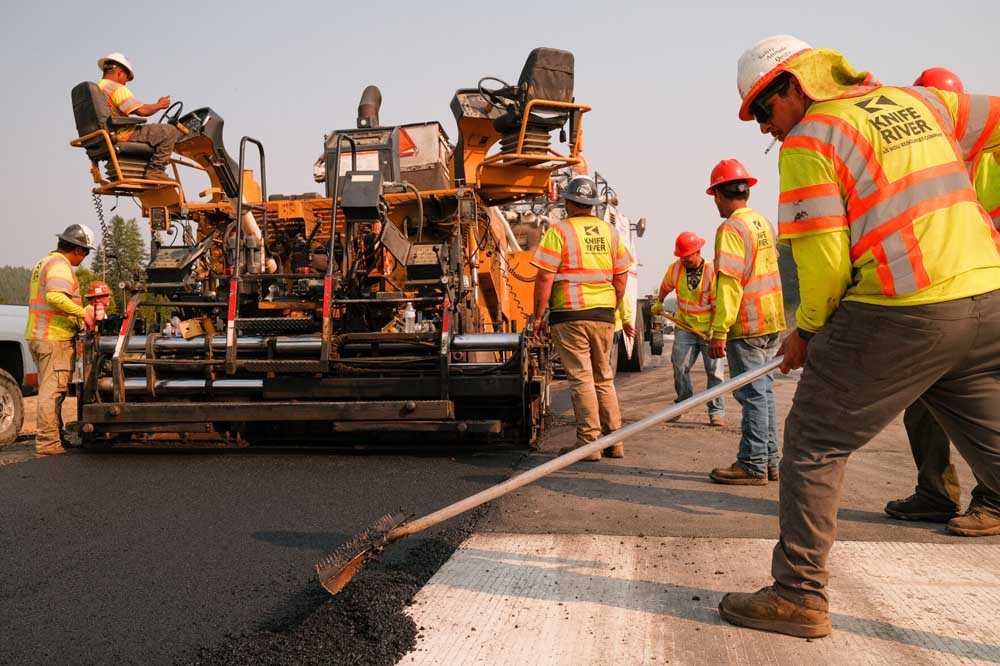The High Desert Museum welcomes new baby beaver
Published 5:30 am Saturday, November 18, 2023

- A new beaver was unveiled Friday by the High Desert Museum in Bend, which took over caring for the animal in May. It had been found in a parking lot a few days earlier, weak and dehydrated and weighing only 1.4 pounds.
BEND — On May 18, Oregon State Police troopers drove a squad car to John Day to pick up a very unusual suspect — a 2-week-old beaver found in a parking lot a few days earlier. Weak and dehydrated, the baby beaver weighed only 1.4 pounds.
Cradled in a small carrying case, OSP transported the baby beaver to Prineville, where it was given to Jon Nelson, the curator of wildlife at The High Desert Museum in Bend.
Nelson rushed the beaver to the museum’s resident veterinarian. No one knew how long the baby beaver — which is called a kit — was separated from its mother, but it had been at least three days since its last meal. For the next few months, the museum staff worked tirelessly to nurse the orphaned beaver back to health.
On Friday, Nov. 17, the museum announced the beaver’s survival story, complete with cute photos and a video.
The first few weeks the beaver was at the museum, staff members weren’t sure she would survive, but the kit had a will to live — most wild animals do, said Nelson. It was like having a human baby.
“You’re up 24 hours a day taking care of this little, tiny fragile animal,” Nelson said. “I was getting up with her every two to three hours.”
Although it is difficult to determine a beaver’s sex, Nelson believes the new resident is female. The museum will know for sure once the vet performs a radiograph, but there hasn’t been a need for that yet, he said.
It took the rest of the summer for the kit to improve, but slowly she grew stronger and healthier.
“When she really started to do well is when she had all of her teeth in, and we were able to start transitioning her to a natural beaver diet, which contains native plants and trees,” Nelson said.
Today, the 6-month-old kit is nearly 18 pounds. Nelson expects that the kit will grow another 20 pounds — more if it turns out she’s a male.
As if to reward them for their hard work, the kit has developed a special bond with museum staff.
Nelson said she follows the museum’s wildlife specialist “around like a puppy dog,” and loves to play in the museum’s creek after hours.
The beaver is an important addition to the museum. Although the museum takes care of over 120 non-releasable animals, a resident beaver can help tell the story of the species’ restoration.
Experts believe there were once 60 million to 400 million beavers in North America, but over the last two centuries, their population was decimated by hunters and their habitat eroded by development.
Nelson even said they’ve considered creating a beaver-specific program for her.
“We let our animals tell us what they are willing to do and what they’re not willing to do. So we’re just waiting to see, you know, kind of where her comfort zone is. And where she’s gonna thrive the best,” he said.
Nelson said the museum waited so long to announce the kit’s arrival because the staff wanted to make sure she would be happy and healthy at the museum before they let people know about her.
“Our primary goal is animal well-being, so we want to make sure that this is the best palace for the animal before we decide it’s going to stay here for the rest of its life,” said Nelson.
The kit doesn’t have a name yet, but the privilege was auctioned off to a museum donor at the 2023 High Desert Rendezvous in August. The donor has not settled on what to call the new beaver, but one thing is certain — her name will reflect her importance and the impact beavers have on the High Desert.






